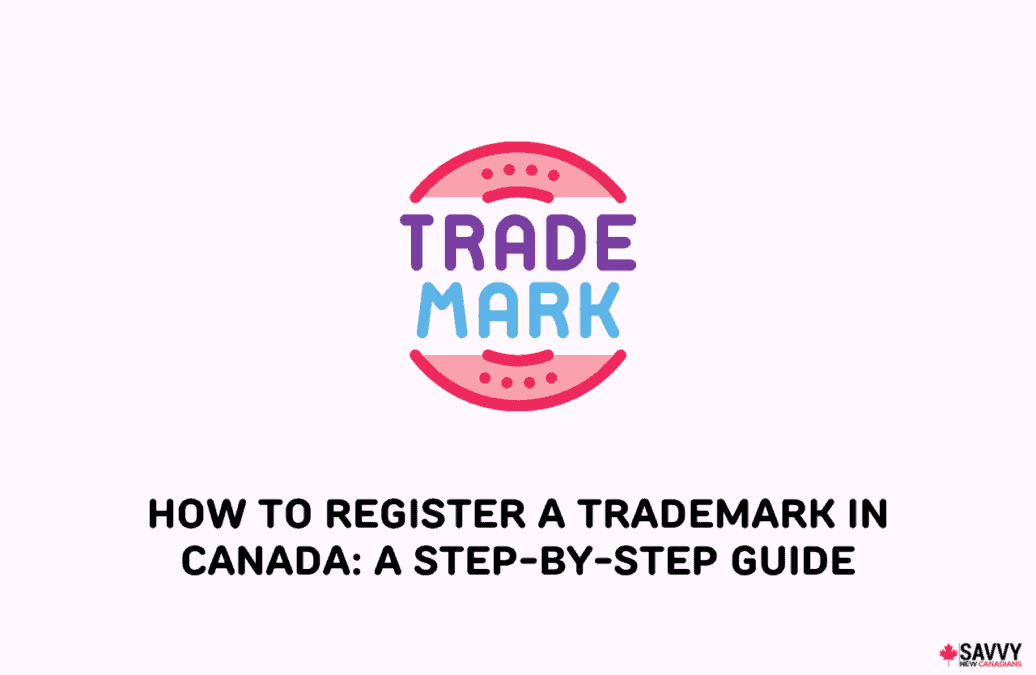Whatever your brand or business, registering a trademark is an essential piece of protecting your intellectual property.
Many different elements can be part of a trademark, but its main purpose is to distinguish your company and all that it offers.
Registering a trademark can help you keep your intellectual property safe from misuse by others, and you’ll have exclusive rights to it for 10 years after registering. That 10-year term can also be renewed, meaning you’ll be able to protect your business indefinitely.
You don’t want others imitating your brand or damaging its reputation through the unlawful use of your trademark. Therefore, registration is essential to ensure your business remains protected.
This guide will outline the steps involved in registering a trademark in Canada.
What is a Trademark?
The Canadian Intellectual Property Office (CIPO) defines a trademark as “a combination of letters, words, sounds, or designs that distinguishes one company’s goods or services from those of others in the marketplace.”
In other words, it’s what sets your brand, product, or business apart – and you want to protect it.
Registering your trademark can help protect your innovation, your brand, and your creation or product.
Over time, your trademark will come to represent not only the actual goods or services you provide but also your company’s reputation. Customers will recognize it as a symbol of your brand and everything it stands for.
How to Register a Trademark Online
The CIPO provides an e-filing service for trademarks that makes registering your trademark accessible from anywhere you can get an internet connection.
Registering a trademark requires the same steps regardless of where you live in Canada – the process of trademark registration is the same in Ontario as it is in Alberta. This guide will take you through all of the necessary steps.
Step 1: Search the Canadian Trademarks Database
CIPO suggests several activities that you may want to consider before you begin the registration process. The most essential of these suggestions is searching the Canadian Trademarks Database to ensure that your desired trademark is available.
On that page, you’ll first select a search field to specify what you’re looking for. Some options include application number, current owner name, old owner name, trademark, and trademark description.
If you’re looking to register a new trademark, you’ll probably want to choose one of the latter options: trademark or trademark description. The other options are more relevant to finding existing trademarks.
Once you’ve selected a search field, you’ll enter your search criteria. That would be the desired name or description of your trademark. Searching the Canadian Trademarks Database will help determine if your trademark has already been claimed.
For instance, if you choose “trademark” as your search field and enter “Tim Hortons” as your search criteria, you’ll see a list of 33 results, including words, designs, and characters.
But if your trademark has not already been taken, you won’t get any results. That’s how you’ll know your idea is still available.
Step 2: Review the Application Requirements and Fee
A complete trademark application will require several components, all of which you’ll need to gather and prepare before you submit your application. These are the items you’ll need:
- Your name and contact information
- A representation or description of the trademark
- A statement of the goods and services related to your trademark
- A statement of goods and services grouped according to the Nice Classification
- Your application fee
- Any other requirements listed on the CIPO website
Every distinct trademark that you want to register will require a separate application.
For instance, you might want to register a trademark for the name of your company as well as for its logo or any other related design. Each of these elements would require an individual application; they cannot be combined into one.
To return to our Tim Hortons example, that company would have had to file separate applications to trademark its name in words, to trademark each design of its name or logo that it has registered, and to trademark any other designs or names (such as the trademarks for its Iced Capp or its Timbits).
The fee you’ll pay will depend on how you submit your application and the number of classes of goods or services your trademark relates to.
If you apply online, you’ll pay less than you would if you submit through other means (such as by mail). You can read the full list of trademark application fees here.
Related: Here’s how to register a business in Alberta.
Step 3: Prepare the Trademark Application
The most involved aspects of preparing your trademark application are usually putting together the representation or description of the trademark and compiling a list of related goods and services.
Preparing the Representation or Description
Your representation or description could take many forms depending on the type of trademark you’re aiming to register.
For visual trademarks, you’ll have to submit a representation like a drawing, picture, or rendering that is smaller than 8 cm by 8 cm.
If your trademark claims colours as one of its features, the representation must be submitted in colour. You’ll also need a description of the colours and where they appear.
Some trademarks may also include sound or moving images, in which case you’ll need an electronic representation and description of the trademark.
More information about nontraditional trademarks and trademark components (holograms, scents, tastes, etc.) can be found here.
The range of features you can claim as part of your trademark application is broad, so the CIPO’s guide to nontraditional trademarks can be a valuable resource to help ensure you’re protecting as much of your intellectual property as possible.
Preparing the Statement of Relevant Goods and Services
The other important part of your application that you’ll need to prepare is the statement of relevant goods and services.
These can be quite specific, so you’ll want to use the CIPO’s Goods and Services Manual to pick the categories that apply to your trademark. The manual has a search function to help you do this.
For example, one of the Tim Hortons logo trademarks lists the following descriptions for goods and services related to the trademark:
Goods: Donuts, donut holes, bagels, muffins, cakes, biscuits, cookies, pies, coffee beans and ground coffee, sandwiches, soups, chili, soft drinks, juice, and prepared non-alcoholic beverages namely, coffee, specialty coffees including cappuccino, hot chocolate, and tea.
Services: Sit-down and take-out restaurant services.
Within the Goods and Services Manual, you can search by keyword, by Nice Class, or alphabetically to find the right classifications for your trademark.

Step 4: Pay the Fees and File Your Application
When you’ve gathered the components of your application and are ready to submit it, you can file your application and pay the fee online, or you can send your application and fee by mail. Applications submitted by mail should be sent to the following address:
Office of the Registrar of Trademarks
Canadian Intellectual Property Office
Innovation, Science, and Economic Development Canada
Place du Portage I
50 Victoria Street, Room C114
Gatineau QC K1A 0C9
Once your application has been received, whether by mail or online, staff will review it to ensure that it includes all the requirements. If your application is missing anything, the Office of the Registrar of Trademarks will contact you to ask for additional information.
When that process is complete, the Registrar will send you confirmation that your application has been received and will give you a filing date. Make sure to keep any communication you receive from the Registrar.
The filing date is when your application met all the filing requirements. It’s an important piece of information because it can be crucial in deciding who gets to register a trademark in the case of two similar trademarks that are pending simultaneously.
Step 5: Continue Correspondence with the CIPO
After you apply to register your trademark and receive a filing date, an examination process will begin. The examination process will ensure that your trademark does not overlap with other trademarks, that it meets legal requirements, and that there is no opposition to your trademark.
Depending on the outcome of this examination, you may need to take additional steps to ensure that your trademark is registered.
File an Amended Application
Based on the examination findings, you may need to file an amended application. This amendment will respond to any issues that came up during the application process and will revise your trademark idea, often with slight changes.
Send General Correspondence
While registering your trademark in Canada, you may need to correspond with the Office of the Registrar of Trademarks. Be sure to respond to them because if you don’t respond to an examiner’s report, the Registrar may believe your application has been abandoned.
You can correspond with the Registrar either online or by mail. Online correspondence will use the same system that you used for filing online, accessible here. Correspondence by mail will use the physical address listed above.
Some common correspondence topics might include cancelling or withdrawing your trademark application, changing a name or address, or appointing a trademark agent.
Ensuring that you stay on top of this communication can help expedite getting your trademark registered.
Step 6: Receive Your Certificate of Registration
Before your trademark is registered, it will be published in the Trademarks Journal, which can be found on the CIPO website each Wednesday.
This journal shares every approved trademark application in Canada so that others may object to any trademark before officially registering it.
Any person can oppose your trademark, but they must do so (or request an extended period during which to oppose it) within two months of the advertisement in the Trademarks Journal. If your trademark does get opposed, you can engage in opposition proceedings, which are similar to court proceedings.
As long as your trademark is not opposed (or opposition has been decided in your favour), the Registrar will register your application.
Once they’ve done that, they’ll send you a certificate of registration, and they’ll enter the trademark in Canada’s Register of Trademarks. At that point, the process is complete.
Related: Check out the step-by-step in registering a CRA My Business Account.
FAQs
The CIPO’s e-filing system makes registering a trademark online fairly doable. You can register a trademark as an individual, partnership, trade union, association, or corporation. There is the option to hire a registered trademark agent, who will have lots of knowledge about trademark law, but that is not required.
The base fee for filing a trademark application in Canada online is about $340. That amount covers the first class of goods or services related to the trademark application. For each additional class of goods or services, you can expect another $100 or so to be tacked on.
Registering your trademark gives you exclusive rights to use it throughout Canada for 10 years. This is a term that you can renew for a fee once those 10 years are up. The fee to renew a trademark is currently just over $400 plus about another $130 for each additional class of goods and services on your application.
From filing to registration, the entire application process normally takes about 18 to 24 months on average – as long as there are no oppositions. The CIPO estimates that trademark applications will be examined by its staff within 15 to 18 months from the date of filing.
You do not need a lawyer to file a trademark in Canada. The CIPO’s online e-filing system makes registering a trademark accessible, and you can do it yourself. If your application encounters opposition, however, the CIPO does suggest that you hire a trademark agent at that point.
Related: How to register your business in British Columbia and Ontario.



